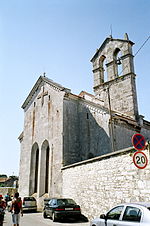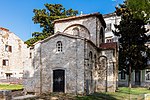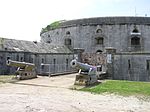SMS Viribus Unitis

SMS Viribus Unitis was an Austro-Hungarian dreadnought battleship, the first of the Tegetthoff class. "Viribus Unitis", meaning "With United Forces", was the personal motto of Emperor Franz Joseph I. Viribus Unitis was ordered by the Austro-Hungarian Navy in 1908 and was laid down in Stabilimento Tecnico Triestino shipyard in Trieste on 24 July 1910. Viribus Unitis was launched from the shipyard on 24 June 1911 and was formally commissioned into the Austro-Hungarian Navy on 5 December 1912. She spent her early career performing training missions and making trips to foreign ports. In June 1914, she carried Archduke Franz Ferdinand on a trip to Bosnia with his wife Sophie. During his visit to Sarajevo, he was assassinated by Gavrilo Princip in the event that caused the beginning of World War I. During World War I, Viribus Unitis took part in the flight of the German battlecruiser SMS Goeben and light cruiser Breslau. In May 1915, she also took part in the bombardment of the Italian port city of Ancona. Viribus Unitis was sunk while at anchor by limpet mines emplaced by Italian sailors on 1 November 1918.
Excerpt from the Wikipedia article SMS Viribus Unitis (License: CC BY-SA 3.0, Authors, Images).SMS Viribus Unitis
Revelanteova ulica, Grad Pula Stoja (Pula)
Geographical coordinates (GPS) Address Nearby Places Show on map
Geographical coordinates (GPS)
| Latitude | Longitude |
|---|---|
| N 44.869166666667 ° | E 13.819166666667 ° |
Address
Fort Kaiser Franz
Revelanteova ulica
52106 Grad Pula, Stoja (Pula)
Croatia
Open on Google Maps










